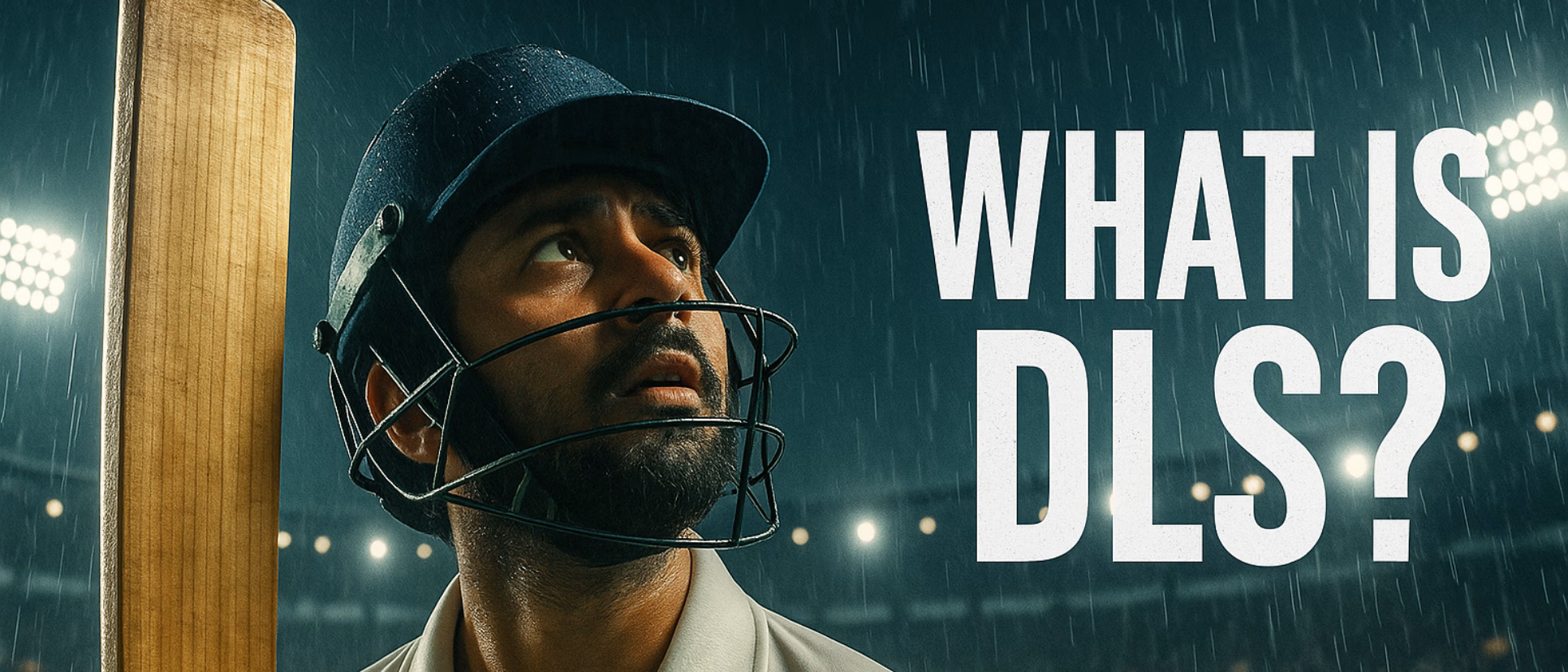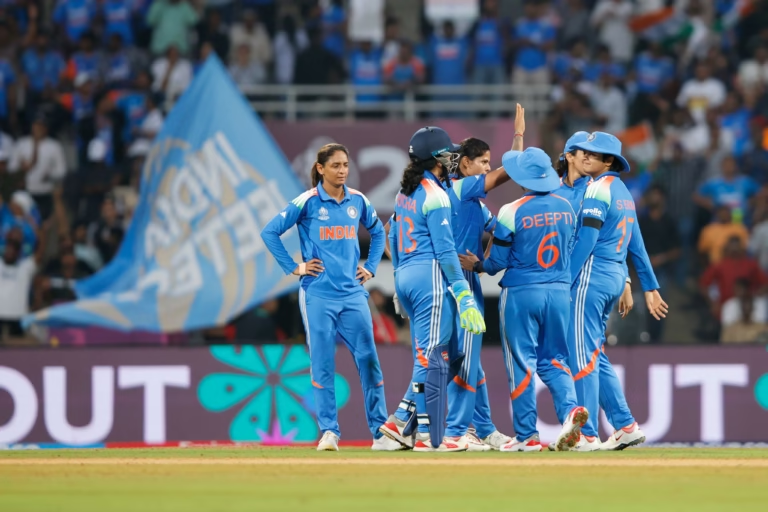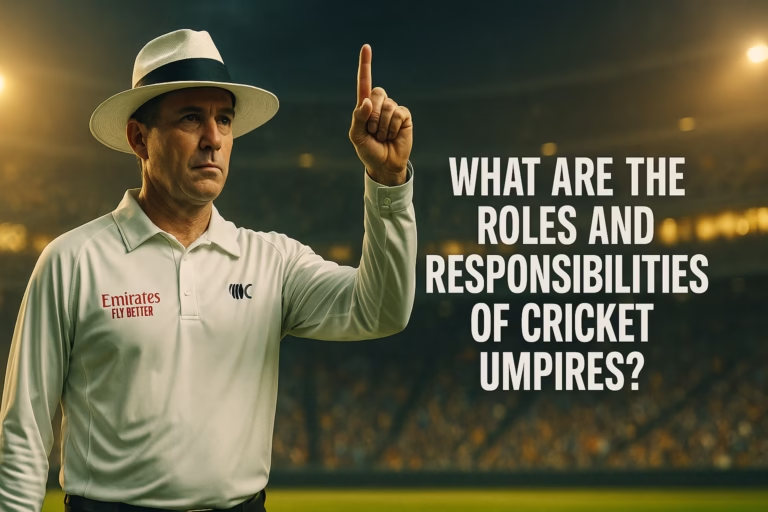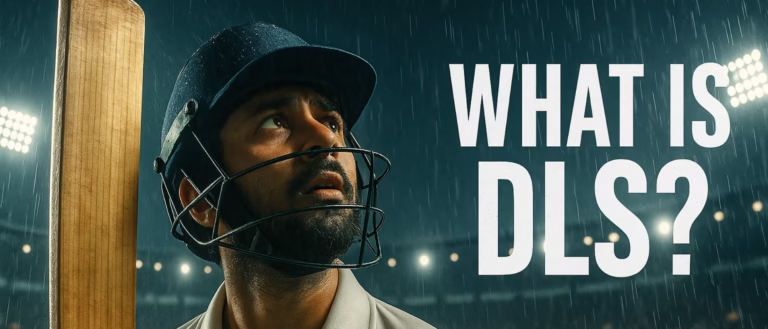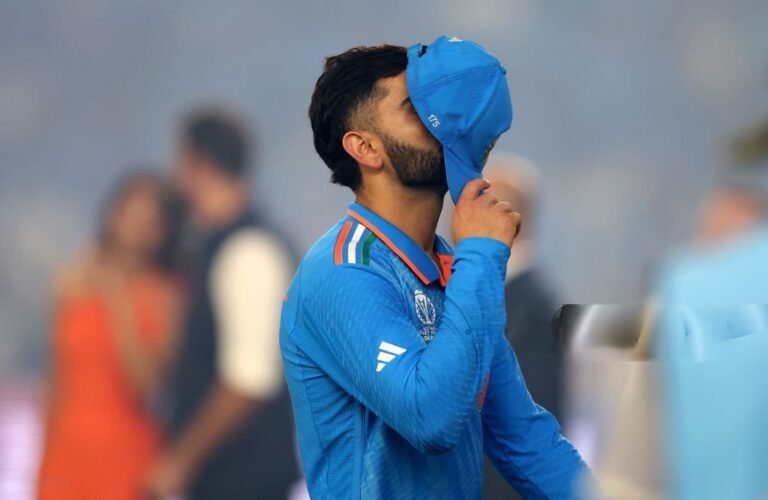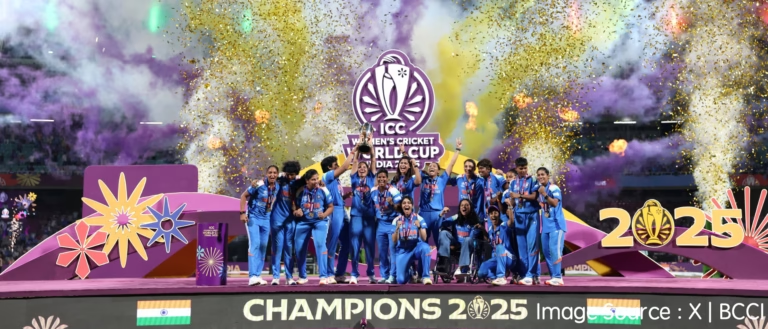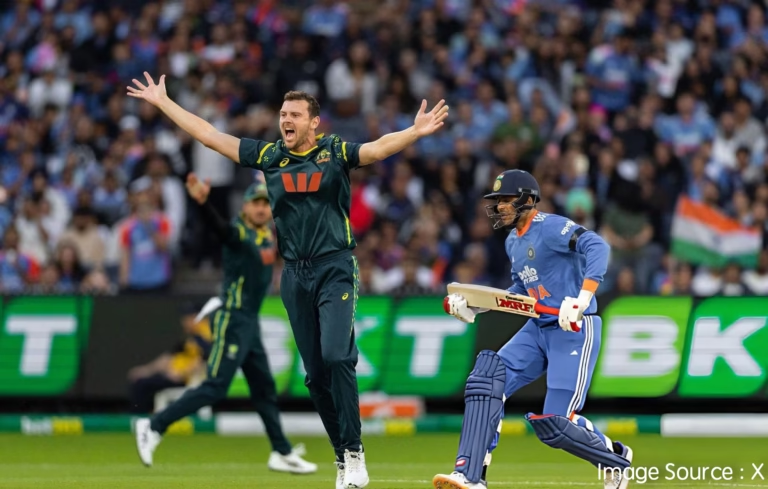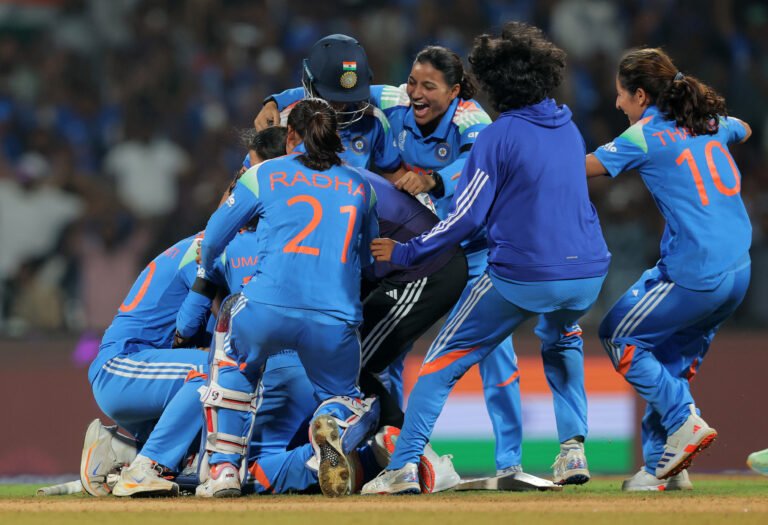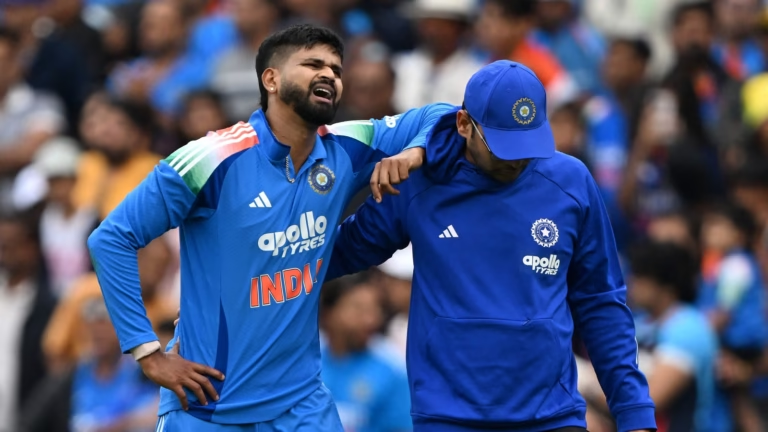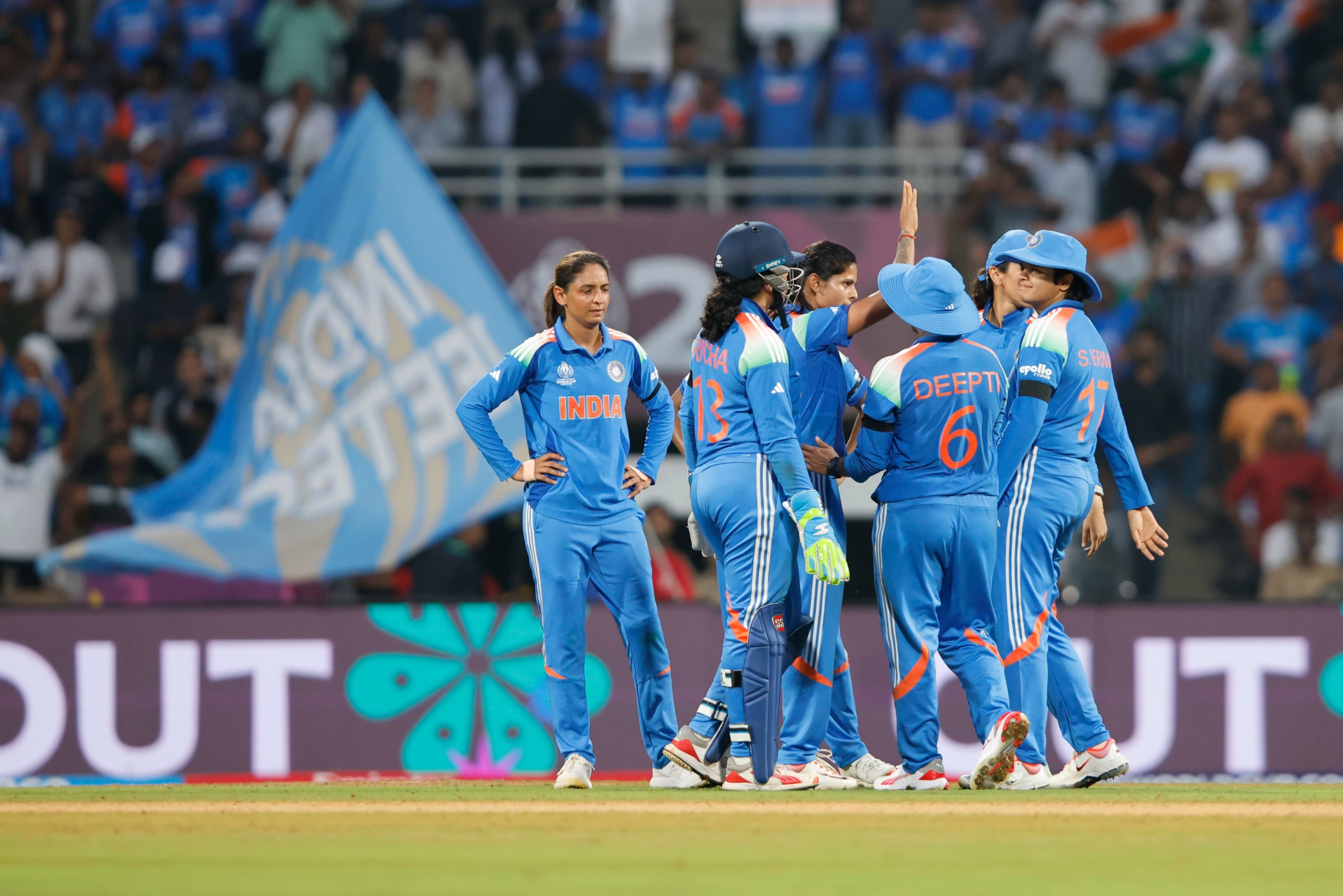What is DLS? Understanding the Duckworth-Lewis-Stern Method in Cricket
The Duckworth–Lewis–Stern (DLS) method is a mathematical formula used in limited-overs cricket to set revised targets for the team batting second when matches are interrupted by rain or other circumstances.
We may also refer it as cricket’s rain rule that converts overs + wickets remaining into a resource percentage and sets a revised, statistically fair target for the chasing side

Let us try to understand how this formula was arrived at, and what do each of these factors in the formula mean.
Introduction to the DLS Method
The DLS method was originally developed (and named DL method) by English statisticians Frank Duckworth and Tony Lewis in 1997 and first implemented internationally in 1999. After updates by Australian statistician Steven Stern in 2004, it was renamed to DLS method to reflect modern scoring patterns, especially in T20 cricket, it has become the global standard for handling rain-affected matches in international and franchise cricket

Why Was the DLS Method Needed?
Before the DLS, cricket used methods like Average Run Rate and Most Productive Overs, which often led to unfair results by not considering the match situation properly.
The notorious example is the 1992 World Cup semifinal, where South Africa’s target bizarrely changed to 21 runs off 1 ball after rain. DLS was designed to avoid such outcomes by taking both overs left and wickets in hand into account to determine fair targets
How the DLS Method Works
The DLS method works on the principle that a batting team has two resources available: overs to play and wickets remaining. These resources deplete as the innings progresses.
If overs are lost mid-game, the target for the chasing team is revised based on the percentage of resources still available compared to the total resources used by the team batting first.
Simplified formula used for revised target setting is typically:
Team 2’s Target = Team 1’s Score X ( Team 2’s Resources / Team 1’s Resources)
In the above formula, Resource is derived from ICC published Resource Tables.
Resource percentage tables are tables listing the percentage of “resources remaining” given overs left and wickets lost. For example: 50 overs & 10 wickets = 100% resources.
- Example: In the 2002 ICC published Resource Tables revision it is depicted that if overs remaining is 20 & 8 wickets in hand it means Team-2 has approx. 52.4% resources.
- Another example : If Overs remaining is 30 and Team-2 has 6 wickets in hand then it means Team-2 has 54.1% resources.
In practice, scorers and officials use – Official DLS calculators, Mobile apps, Software integrated into scoring systems. These tools automatically compute revised targets instantly during rain-affected matches, ensuring accuracy and fairness.
So while the concept can be explained simply, the exact calculation is best left to specialised software rather than manual attempt by a lay person.
Resource calculation considers:
- Resources = Overs + Wickets – Every combination of balls left and wickets in hand corresponds to a resource percentage (i.e. for ODI, ideal Resource for Team 2 would be 50 overs + 10 wickets = 100%)
- Interruptions reduce resources: When rain shortens either innings, the method recalculates the target using those percentages.
- Fairness principle: If Team 1 knew from the start it only had fewer overs, it would have batted differently; D/L(S) accounts for that.
- Minimum overs for a result: typically 20 overs in ODIs and 5 overs in T20Is (unless all-out or target reached earlier).
Five famous matches to show D/L(S) in action
1. Zimbabwe vs England, 2nd ODI, Harare — Jan 1, 1997
Why it matters: First international decided using D/L; Zimbabwe won by 7 runs.
2. South Africa vs Sri Lanka, 2003 Cricket World Cup, Durban — Mar 3, 2003
What happened: SA misread the par score under D/L and settled for a tie, getting knocked out.
3. India vs England, 4th ODI, Bengaluru — Nov 23, 2008
Textbook D/L first-innings reduction: Match cut to 22 overs a side; India 166/4, England’s target revised to 198 and they fell 19 short.
4. England vs West Indies, T20 World Cup 2012 (Pallekele)
Short-format example: A rain-hit chase under D/L in a marquee T20 event.
5. India vs Bangladesh, T20 World Cup 2022, Adelaide — Nov 2, 2022
Modern DLS at work: Rain break mid-chase; Litton Das’s blitz had BAN ahead, but the revised target tightened the endgame and India won.
Watch: ICC & YouTube clips – icc
Recent reminder: DLS still decides big games — e.g., Australia’s rain-hit win over Bangladesh at the 2024 T20 World Cup used DLS in Antigua.

